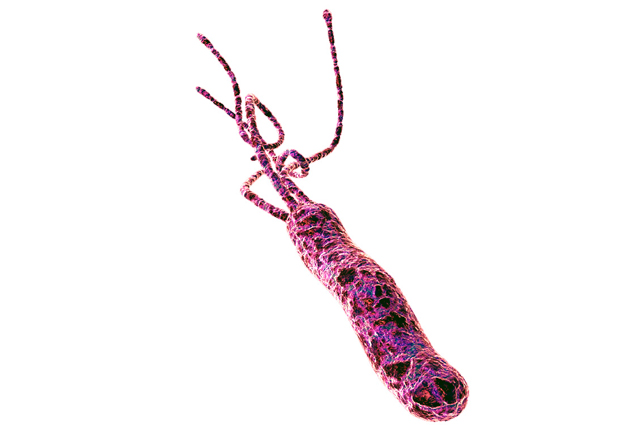
Cell division offers hope to fight antibiotic resistance
Keeping bacterial chromosomes tangled could offer hope in developing novel approaches to treating bacterial infections

Growing levels of antibiotic resistance pose a serious threat to global public health and scientists are racing to find novel ways to tackle bacterial infections. EMBL’s Orsolya Barabas explains a recent study by her lab on how bacteria untangle their chromosomes during division, and the hope that this opens for developing new antibacterial treatments.
What did you find?
A bacterium’s DNA is in a ring-shaped chromosome. When the bacterium divides to produce two daughter cells, the DNA has to be repackaged into two rings, one for each new cell. The DNA in the two daughter rings often gets tangled. If those chromosome rings cannot be untangled, the two daughter cells cannot separate from each other and the bacteria will ultimately die.

Most bacteria have a protein that cuts any DNA tangled during cell division and sticks it back together as two distinct daughter chromosomes. We discovered that this protein doesn’t start cutting as soon as it binds to DNA. First, another protein has to activate it by changing its shape. This means one could look at designing drugs to interfere with that activation process. And that’s really good news because the alternative – preventing proteins from binding to DNA – is very difficult.
Why is it important?
At the moment, it seems like for every antibiotic we have, there’s at least one bacterium that’s resistant to it. This means common infectious diseases are getting harder to treat and procedures that we routinely use today such as organ transplants, chemotherapy, surgery and diabetes management could become very risky. If we’re going to overcome that, we need to look at new ways of fighting bacterial infections. Preventing the untangling of chromosomes during bacterial cell division could be one option. The untangling seems to work in a similar way in most types of bacteria, although the proteins are slightly different from one species to another. So with the knowledge that we’ve acquired in this study, we could either look at developing generic drugs that would target all bacteria equally, or we could also envision going for a specific therapy for specific bacteria.


